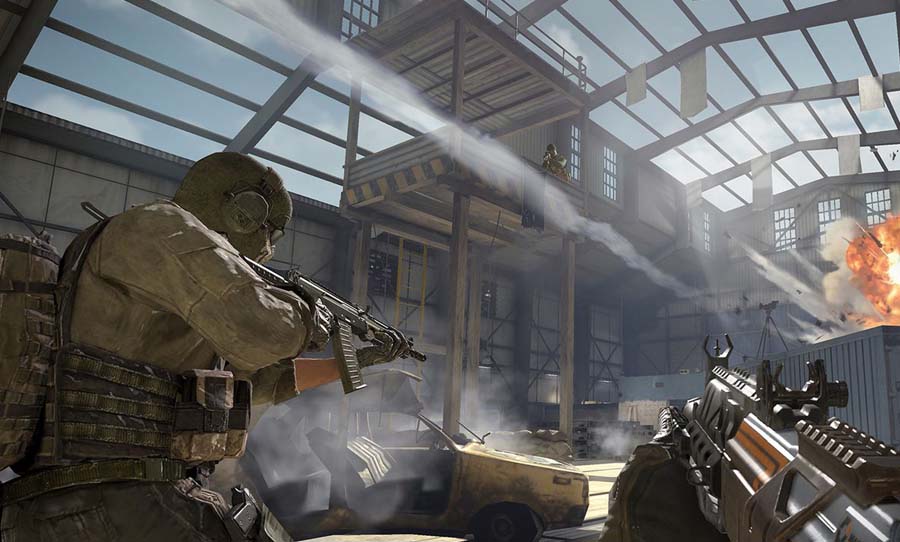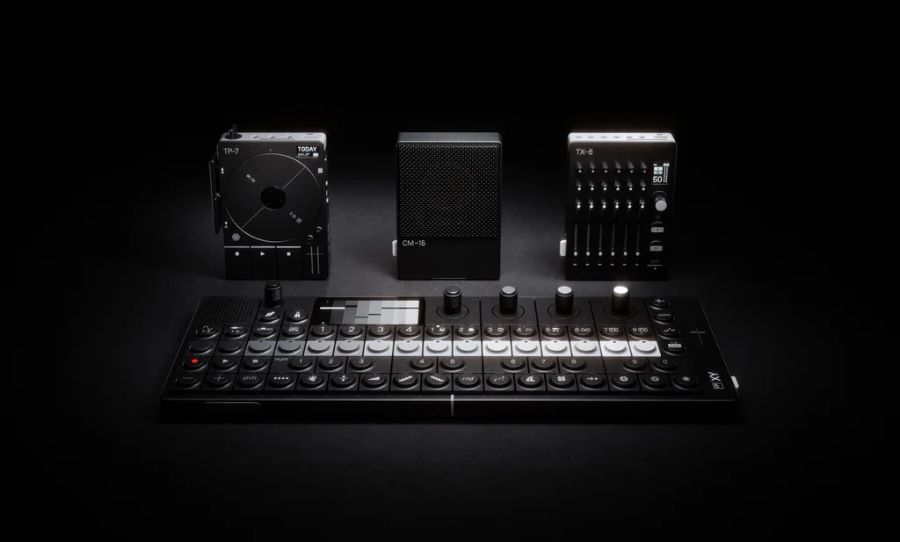For more than 20 years, the first-person shooter (FPS) genre of games has gripped our imagination like no other. Key to its obsession-inducing qualities is its ability to put you in the driver’s seat of the adventure through its point-of-view, three-dimensional visual perspective. Just as important is sound.
It’s evident in the inspiring scores that accompany cutscenes, the haunting drones that infect your mind in the midst of a mission and the hyper-realistic sound effects and foley that make you feel every blow. To say that the experience is visceral is an understatement.
So let’s dive into this world of intense sensual feedback with a focus on sonics and discover how it enhances the experience of FPS.
The FPS experience, even in the multiplayer arena, is deeply personal. The point-of-view perspective, coupled with immersive sounds, makes for an adventure like no other.
From fake to real
In the ’90s, consoles and PCs went through a critical transition on an architectural level. In the decades leading up to the turn of the millennium, RAM power was very limited compared to now, as such, immense capacity for storing and rendering complex sounds was not available. The dynamically bereft scores (which are now classics) and sounds effects which were the hallmark of the ’80s didn’t make for an experience of immersive realism.
As chipsets became more powerful and cost-effective, composers increasingly turned away from synthesised sounds for music and effects in favour of samples. It’s more akin to the methods of movie and TV sounds: real-life musicians playing a real-life score; real-life voice actors infusing characters with human personality; real-life foley artists creating an auditory world using actual materials.
Notwithstanding the ’90s efforts of the immortal DOOM, Wolfenstein and Quake franchises, Halo was the game that brought with it an entirely new console, plus, a new understanding of what sound in an FPS could be. It raised the bar for soundtrack expectations—which, in a way, is removed from the gameplay itself, but still integral to the game’s overall atmosphere. The tribal chants, the driving string ostinati, the haunting choirs and military drums: it blurred the lines between the cinema and game experience.
Epic atmosphere
With the Halo score, the boundaries of the FPS were reset: epic was to be expected from then on. On the other side of the coin, however, was the psychological, the personal, the kind of sound world that is designed to haunt your dreams. As the worlds of FPS became more and more open with each generation of console and advancement of the game development craft, foley became more and more crucial.
Expansive libraries of footsteps, grunts, breath types and more began to be utilised in games. Weaving these subtle, realistic textures into the gameplay all contributed to the heart-racing theatre of combat. Listen to the below example from Call of Duty: Black Ops 3. Before you know it, your breath will quicken and you’ll feel a little stressed out—and that’s without even playing.
You could close your eyes and still picture this world very clearly from the sonic information provided. From the cries of birds, then the footsteps on a dirt path, the metallic jiggle of your pack and ammunition: it’s clear that you’re outside and you’re about to head into battle.
When you engage the enemy and take incoming fire, the bassy thumps of your heartbeat tell you that you’re in danger, but when you shake it off, the high pass filter reopens and the full scope of the sounds of battle is revealed again. That’s even before acknowledging the most crucial sound: that’s right, it’s time to bring out the big guns.
Pulling the trigger
The sound of the weapon at hand (and the weapons that are firing at you) are paramount to the suspension of disbelief in an FPS. Simply put, it’s the sound you’ll hear most in the game, so it better be a good one.
There’s a distinct challenge in nailing the complexity of a weapon’s sound. The shot of a rifle might be made of dozens of different elements. And while sound designers are gifted with a lot more memory capacity to work with compared to their ancestors, it’s not unlimited, so files may still have to be compressed, with less-than-desirable effects on the tone. It’s a balancing act.
Plus there’s the additional challenge of making sense of identifying gunfire in the heat of battle. Spatially, there are increasingly interesting ways to navigate the sonics of a cacophonous battle-field, but it also helps to create individual characters for weapons, to enhance clarity. In an archived article from Criteriongames.com, sound designer Chris Sweetman explains his elegant solution to rendering complex gun battles in the FPS Black:
“So one guy would have a low weapon, another would have a middle and the last guy would have a high. What this gave us was unparalleled clarity in the mix. You can hear distinctly in 3d space where each enemy is firing from and this not only aids the mix it also gives you clear feedback from the game on where you are being fired at from.”
Though we can generally expect the sound worlds of FPS to become ever more complex and engaging, Sweetman’s example illustrates that the craft still requires ingenuity on a human level. From using the resources we have at our disposal to craft individual characters for weapons, to paying close attention to foley and sound effects and building a foreboding atmosphere with music, it’s clear that the future of immersive FPS will rely more on artistic concepts than on computing horsepower.


